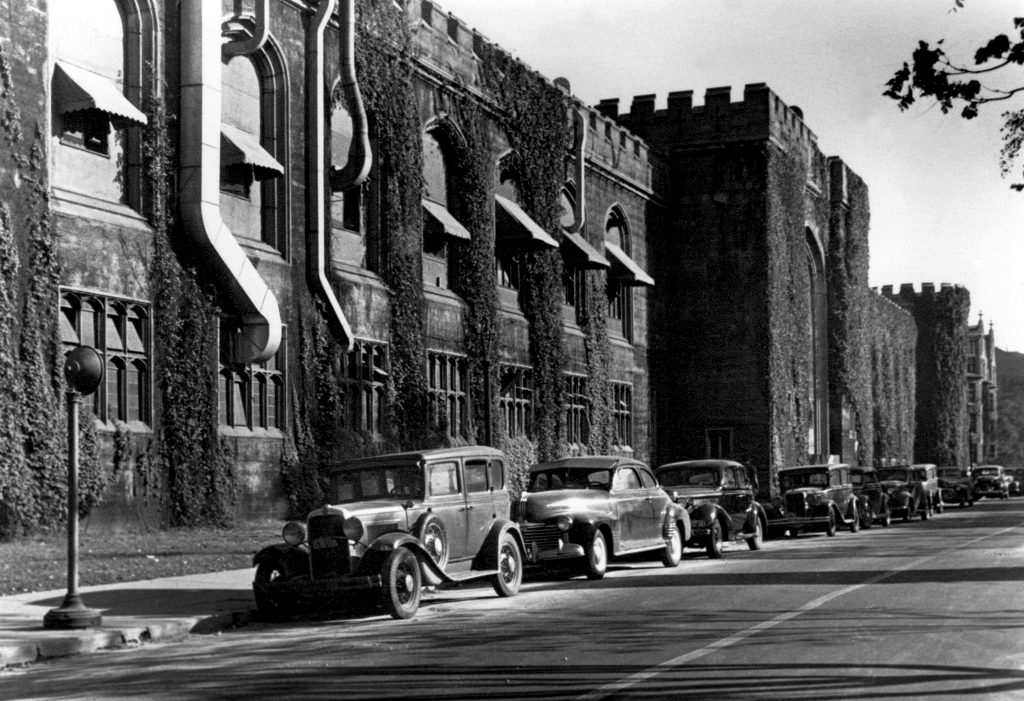Austin M. Brues (1906-1991) was the Director of the Biology Division at the Manhattan Project’s Chicago location, the Metallurgical Laboratory (Met Lab).
In 1944, he left Harvard University to join the Met Lab and work in Site B, the lab’s location for scientists in the metallurgy and health divisions. As a medical doctor and radiation researcher, Dr. Brues explored the biological effects of exposure to radiation.
According to Brues, Site B included “an animal farm with a remarkable number of small animals, mostly mice,” which they used for radiation experiments. Mice would be exposed to both neutrons and X-rays. Once plutonium was in greater supply, they also performed tests on dogs and goats.
Activities at Site B were coordinated with Site X also known as Oak Ridge. Brues recalls that during the war, they would be “buying mice every fortnight and then reshipping half of them to Oak Ridge by a truck that brought us back fission products.” This exchange of resources was due to the Met Lab’s possession of an X-ray machine and the military’s refusal to buy one for Oak Ridge.
Brues was one of the seventy scientists at the Met Lab to sign Leo Szilard’s petition against the U.S.’s use of the atomic bomb against Japan. Written on July 17, 1945, the petition argued against using the bomb before Japan had the chance to surrender and the terms of post-war plans became public. It was never read by President Truman or the Secretary of War before the bombing of Hiroshima.
In 1945, he also became a professor of medicine at the University of Chicago.
Early Years
Austin M. Brues was born in Milwaukee, Wisconsin on April 25, 1906. He attended Harvard University and graduated in 1926. While at Harvard, he received numerous accolades, such as the Charles Sumner Scholarship and Parmenter Scholarship.
In his pursuit of a medical career, he stayed at Harvard for its medical school and graduated in 1930. His studies and research focused on the biological effects of radiation exposure, battlefield shock, and P32 therapies.
After graduating from Harvard Medical School, Brues became a professor at Harvard. He also worked as a doctor in many Boston area hospitals and served as a consultant for the Army Chemical Corps, Army Surgeon General, and the United States Public Health Service (USPHS).
Later Years
Following World War II, Brues worked at Argonne National Laboratory, the successor of the Met Lab. At Argonne, he served as both the Director of the Biology Division (1946-1950) and Director of the Medical Division (1950-1962). At the same time, he served on the Atomic Bomb Casualty Commission (ABCC), a group of experts put together by the United States Secretary of War to study the effects of the atomic bomb on Hiroshima and Nagasaki survivors.
In her interview on the Atomic Heritage Foundation’s Voices of the Manhattan Project website, Floy Agnes Lee recalls her twenty-two years working as an assistant to Brues at Argonne. Her first assignment for Brues was to grow living cells on nylon film for radiation study. Lee referred to Brues as a “wonderful person,” who was greatly “knowledgeable in physics and everything as far as radiation was concerned.”
Lee also described how Brues was rather serious in the lab. According to her memory, the only time she saw him show emotion was after John F. Kennedy had been assassinated in 1963.
Besides serving on the ABCC, Brues also worked as a consultant to other American and international commissions to analyze the long-term effects of radiation. His interest in medicine and radiation translated into a career in cancer research. From 1954 to 1955, Brues served as the President of the American Association for Cancer Research. In the next two years, he held the position of president for the Radiation Research Society.
In 1979, he was named a professor emeritus at the University of Chicago. At the age of eighty-five, Dr. Brues died of Alzheimer’s disease in Hinsdale, Illinois. During his life he had three children with his wife, Mildred; Roger, Nancy, and Charles. He was survived by Mildred, Nancy, and Charles.
For more information on Dr. Austin M. Brues, please see the following resources:
- Brues reflects on his Met Lab experience
- The New York Times obituary for Brues
- Chicago Tribune obituary for Brues
- Brues at Harvard
- For links to Brues work and papers, click here.





